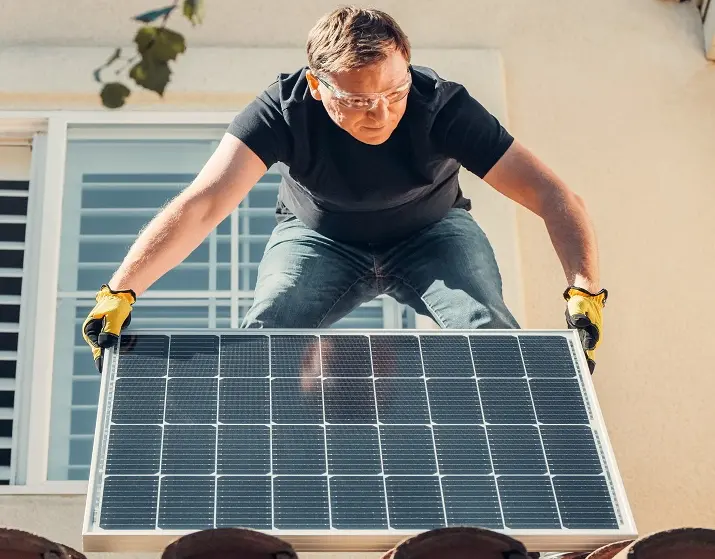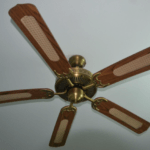Human beings are increasingly embracing renewable energy sources to curb the effects of climate change. While there are several green energy sources, solar is the most practical at an individual level. The government can only implement others like hydroelectric, geothermal, wind, and nuclear energy.
Despite the willingness to install solar energy systems, many people have little information on choosing the right equipment. Read on to discover important tips for choosing the right panels and batteries for your solar energy system.

How to Choose the Right Solar Panel
The following are the factors to consider when purchasing a solar panel.
Power Rating
The most crucial specification of a solar panel is its power rating. Your choice must match your power consumption needs to reduce your reliance on mains electricity. For instance, if your household consumes 500 watts per hour, you must get a panel with a slightly higher rating, like 600 watts.
The extra caters to the power lost during transmission and direct current conversion into alternating current. It also ensures your system remains functional on cloudy and overcast days.
Cell Technology
Polycrystalline and monocrystalline are the two main technologies used to make photovoltaic cells on solar panels. Polycrystalline panels are cheaper but produce less energy than similar-sized monocrystalline panels. For this reason, they’re ideal for small-scale applications like powering household appliances.
On the other hand, monocrystalline panels are more expensive. Their high efficiency makes them suitable for powering larger equipment like submersible water pumps, signal transmitters, and other similar devices.
Warranty
The typical lifespan of solar panels is 25 years. Ensure the product you purchase has a matching warranty. More importantly, it should have a performance warranty that guarantees a replacement if the panel doesn’t give the expected output over a specified period.
Temperature Coefficient
Although solar panels produce more electricity as sunlight intensifies, their performance dwindles if temperatures rise too much. This phenomenon is called the temperature coefficient. When shopping, choose a model with a low coefficient to guarantee high performance on hot days.
How to Choose a Solar Battery
Use the following tips to choose the correct battery for your solar energy system.
Battery Capacity
Battery capacity is the theoretical amount of power it can provide until it’s discharged. For example, a 200 Ah battery can provide two amperes for 200 hours or 10 amperes for 20 hours, and so on.
When shopping, remember your power needs determine the ideal battery capacity.
It’s worth noting that batteries with long warm-up cycles before being fully charged are likelier to outlast batteries with a high initial capacity.
Lifespan
A battery’s lifespan depends on three factors – depth of discharge, cyclic life, and temperature.
Depth of Discharge
Depth of discharge is the amount of electricity used by a battery. For example, 100 Ah with 87% discharge capacity allows you to use 87 Ah before recharging while keeping the remainder asreserve.
Solar batteries need to keep some energy in reserve throughout – if they don’t, their lifespan decreases. A higher depth of discharge often corresponds with an increased battery capacity.
Cyclic Life
Cyclic life is the number of charge and discharge cycles of a solar battery. Under regular use, flooded batteries last between 400 and 700 cycles. Gel batteries have the most extended cyclic life, lasting up to 5,000 cycles before losing performance. Lithium batteries are the shortest, lasting only 200 cycles.
Temperature
Higher temperatures increase the chemical activity inside batteries. If you want your battery to last, keep it in a cool area and ensure it doesn’t touch the flow.
Round-trip Efficiency
The round-trip efficiency of a solar battery is the amount of energy expressed as a percentage of the energy used to store it. For example, if you provide 100 Ah of electricity into a battery that can only output 85 Ah, its round-trip efficiency is 85%.
Choosing batteries with higher round-trip efficiencies is advisable because of their cost-effectiveness.
Cost
Lead-acid batteries are cheaper than lithium-ion models. However, flooded lead-acid variants require maintenance, while sealed options and lithium units don’t need maintenance. Depending on your location, you might be eligible for an incentive from the local government when you purchase solar products.
Wrapping Up
The information above can help you choose the best solar equipment and end your reliance on the mains grid. Investing in solar energy helps in environmental conservation and saves you money.
Join 25,000+ smart readers—don’t miss out!






